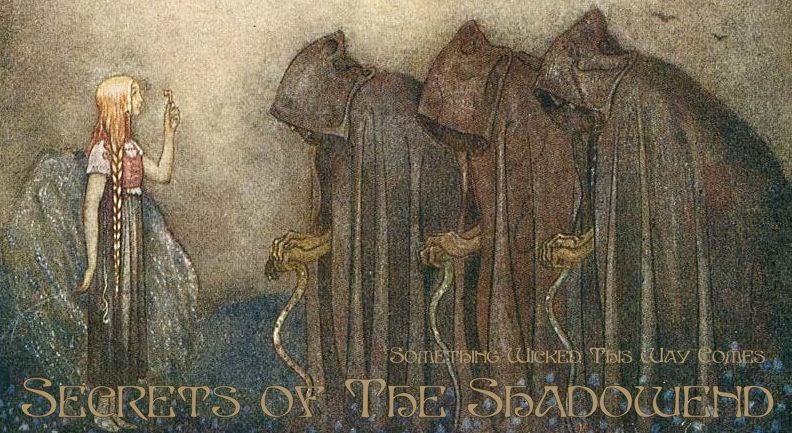Almost all Typhos are selfish, arrogant, and egotistical beings. They adopt portfolios in mimicry of their parents, but lack any divine synergy with their area of concern. Most Typhos pick portfolios that will not bring them into overt conflict with a deity; a few serve one of the Elder Host and have portfolios that reflect the concerns of that power.
Four sample cultist patrons are given below, along with some sample servitors and special abilities. A cultist can summon one of the sample servitors (as the listed CL), build their own, or (with the assistance of the Referee) find other suitable published creatures.
Sample Patrons & Granted Special Abilities
Asterion the Bull
(Impulsiveness, Minotaurs, Rage)
Asterion’s servitors have bovine features and
shapes (see Gorgon, S&W Monster Book pg.42, CL 10; and Minotaur, S&W
Monster Book pg.66; CL 6) and have access to the following special abilities:
Extra Attack (Gore; +1 CL), Improved Armor Class (+1 CL), Improved Damage (+1
CL), Petrifaction (+2 CL).
Atar the Taker
(The Dead, Duty, Tolls & Taxes)
Servitors of The Collector of the Dead
take the form of cloaked and cowled humanoid figures that do not speak (See
Dark Creeper & Dark Stalker, Tome of
Horrors pg.124; CL 2 & CL 4) and usually have some of the following
special abilities: Improved Damage (+1 CL), Invisibility (+1 CL), Poison (+2
CL), Silent (+1 CL).
Enyo the Leveller
(Destruction of Cities & Civilization, The Tarrasque)
Servitors of Enyo
appear as heavily armored monstrosities (see Bulette, S&W Monster Book pg.11; CL 12*) or statuesque women of stone or
bronze (see Chalkeion, S&W Monster
Book, pg.13; CL 5, 6,7, or 11; or Caryatid Column, Tome of Horrors pg.83; CL 7) and can have the following special
abilities: Extra Attack (+1 CL), Improved Armor Class (+1 CL), Improved Damage
(+1 CL), Magic Resistance 25% (+1 CL).
*The bulette's CL has been increased by one for purposes of summoning.
Urjin the Foul (Decay,
Disease, Rot)
Servitors of Urjin usually take the form of giant goats or rams
(see Goat, Giant, S&W Monster Book
pg.39; CL 3; Dire Goat, Tome of Horrors
pg.198; CL 5; or Demon, Mehrim, Tome of Horrors pg.145; CL 9) or
goat-like humanoids (see Satyr, S&W
Monster Book pg.83; CL 6) and have access to the following special
abilities: Disease (+1 CL), Improved Duration (+1 CL), Magic Resistance 50% (+2
CL), Regenerates 1hp/rnd (+1 CL).
Base Statistics for Servitors
These stat blocks are the base for unique servitors. They can be adjusted by adding special abilities or other customization (ie, a servitor can make one attack instead of two, with damage two dice higher: 1-3HD = 1d8; 4-7HD = 1d10; 8+ HD = 1d12)
1HD Demonic Servitor:
HD 1; AC 8 [11]; Atk 2 (1d4/1d4); Move 12 [30’]; CL/XP 1/15
2HD Demonic Servitor:
HD 2; AC 7 [12]; Atk 2 (1d4/1d4); Move 12 [30’]; CL/XP 2/30
3HD Demonic Servitor:
HD 3; AC 6 [13]; Atk 2 (1d4/1d4); Move 12 [30’]; CL/XP 3/60
4HD Demonic Servitor:
HD 4; AC 5 [14]; Atk 2 (1d6/1d6); Move 12 [30’]; CL/XP 4/120
5HD Demonic Servitor:
HD 5; AC 4 [15]; Atk 2 (1d6/1d6); Move 12 [30’]; CL/XP 5/240
6HD Demonic Servitor:
HD 6; AC 3 [16]; Atk 2 (1d6/1d6); Move 12 [30’]; CL/XP 6/400
7HD Demonic Servitor:
HD 7; AC 2 [17]; Atk 2 (1d6/1d6); Move 12 [30’]; CL/XP 7/600
8HD Demonic Servitor:
HD 8; AC 1 [18]; Atk 2 (1d8/1d8); Move 12 [30’]; CL/XP 8/800
9HD Demonic Servitor:
HD 9; AC 0 [19]; Atk 2 (1d8/1d8); Move 12 [30’]; CL/XP 9/1,100
10 HD Demonic Servitor:
HD 10; AC -1 [20]; Atk 2 (1d8/1d8); Move 12 [30’]; CL/XP 10/1,400
11HD Demonic Servitor:
HD 11; AC -2 [21]; Atk 2 (1d8/1d8); Move 12 [30’]; CL/XP 11/1,700
12 HD Demonic Servitor:
HD 12; AC -3 [22]; Atk 2 (1d8/1d8); Move 12 [30’]; CL/XP 12/2,000







